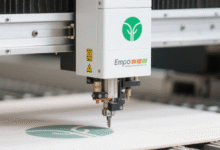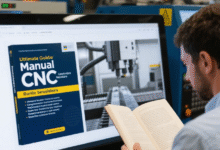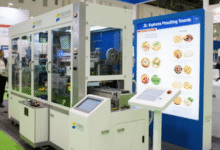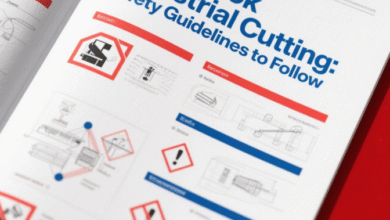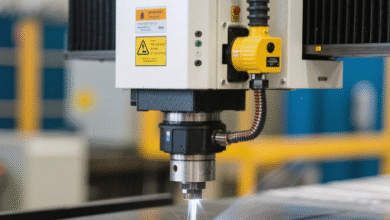Maximizing Efficiency in Textile Operations
Advertisement
The Importance of Efficient Textile Operations
Efficiency is the key to success in any industry, but it is especially crucial in the competitive world of textile operations. Efficient textile operations can lead to increased productivity, reduced costs, and improved quality, ultimately giving companies a competitive edge in the market. By streamlining processes, optimizing resources, and minimizing waste, textile manufacturers can meet customer demands more effectively and stay ahead of the competition.
Streamlining Processes
One of the main benefits of efficient textile operations is the ability to streamline processes. By analyzing workflows and identifying areas for improvement, companies can eliminate bottlenecks, reduce lead times, and increase overall productivity. This allows for a more seamless production process from raw materials to finished products, ensuring that orders are fulfilled on time and to the highest quality standards.
Optimizing Resources
Efficient textile operations also involve optimizing resources to maximize output while minimizing input. This includes effectively managing materials, machinery, and manpower to ensure that resources are utilized efficiently and cost-effectively. By implementing lean manufacturing principles and utilizing advanced technologies, companies can achieve higher levels of productivity without compromising on quality.
Minimizing Waste
Another key aspect of efficient textile operations is minimizing waste throughout the production process. This not only includes reducing raw material waste but also optimizing energy usage, water consumption, and overall environmental impact. By implementing sustainable practices and adopting eco-friendly technologies, companies can improve their reputation, reduce costs, and contribute to a cleaner environment.
Enhancing Quality
Efficiency and quality often go hand in hand in textile operations. By implementing efficient processes, companies can ensure that products are manufactured to the highest standards, meeting customer expectations and regulatory requirements. Consistent quality not only leads to customer satisfaction but also reduces the risk of returns, rework, and other costly defects.
Improving Customer Satisfaction
Efficient textile operations can have a direct impact on customer satisfaction. By delivering orders faster, with higher quality and lower costs, companies can build strong relationships with customers and increase loyalty. Satisfied customers are more likely to return for repeat business and recommend the company to others, ultimately driving growth and profitability.
Increasing Competitive Edge
In today’s fast-paced market, companies need every advantage they can get to stay ahead of the competition. Efficient textile operations give companies the edge they need to compete effectively, whether through faster lead times, lower prices, or superior quality. By continuously improving processes and staying ahead of industry trends, companies can position themselves as leaders in the market.
Strengths of Efficient Textile Operations
Efficient textile operations offer numerous benefits to companies, including increased productivity, reduced costs, improved quality, and better customer satisfaction. By streamlining processes, optimizing resources, and minimizing waste, companies can achieve higher levels of efficiency and competitiveness in the market. However, there are also weaknesses associated with efficient textile operations that companies need to be aware of in order to mitigate risks and ensure long-term success.
Strength: Increased Productivity
One of the key strengths of efficient textile operations is increased productivity. By streamlining processes and optimizing resources, companies can produce more goods in less time, maximizing output and revenue. This not only improves efficiency but also allows companies to meet customer demands more effectively and capitalize on market opportunities.
Strength: Reduced Costs
Efficient textile operations can also lead to reduced costs. By minimizing waste, optimizing resources, and improving quality, companies can lower production costs and increase profitability. This cost savings can be passed on to customers in the form of lower prices, giving the company a competitive advantage in the market.
Strength: Improved Quality
Efficiency and quality go hand in hand in textile operations. By streamlining processes and eliminating waste, companies can produce goods of higher quality, meeting customer expectations and regulatory standards. Consistent quality not only leads to customer satisfaction but also reduces the risk of returns, rework, and other costly defects.
Strength: Better Customer Satisfaction
Efficient textile operations can have a positive impact on customer satisfaction. By delivering orders faster, with higher quality, and lower costs, companies can build strong relationships with customers and increase loyalty. Satisfied customers are more likely to return for repeat business and recommend the company to others, driving growth and profitability.
Strength: Competitive Edge
Efficient textile operations give companies a competitive edge in the market. By continuously improving processes and staying ahead of industry trends, companies can position themselves as leaders and differentiate themselves from competitors. This allows companies to attract and retain customers, increase market share, and drive growth.
Strength: Environmental Benefits
Efficient textile operations can also have positive environmental benefits. By minimizing waste, reducing energy consumption, and adopting sustainable practices, companies can reduce their environmental footprint and contribute to a cleaner, healthier planet. This not only benefits the environment but also improves corporate image and attracts environmentally-conscious customers.
Strength: Innovation and Adaptability
Efficient textile operations require companies to innovate and adapt to changing market conditions. By continuously improving processes, adopting new technologies, and staying ahead of industry trends, companies can remain competitive and resilient in the face of uncertainty. This culture of innovation and adaptability is essential for long-term success.
Weaknesses of Efficient Textile Operations
While efficient textile operations offer many benefits, there are also weaknesses that companies need to be aware of in order to mitigate risks and ensure long-term success. By understanding the challenges associated with efficiency, companies can develop strategies to address weaknesses and optimize their operations for maximum effectiveness.
Weakness: Overreliance on Automation
One of the weaknesses of efficient textile operations is overreliance on automation. While automation can increase productivity and efficiency, it can also lead to reduced flexibility and creativity in the production process. Companies need to strike a balance between automation and human intervention to ensure that products are manufactured to the highest quality standards.
Weakness: Lack of Innovation
Efficient textile operations can sometimes lead to a lack of innovation. When companies focus solely on streamlining processes and reducing costs, they may neglect the importance of innovation and creativity in product development. This can result in products that lack differentiation and fail to capture the interest of customers.
Weakness: Resistance to Change
Efficient textile operations require a culture of continuous improvement and adaptability. However, many companies may resist change due to fear of the unknown or reluctance to disrupt existing processes. This resistance can hinder progress and prevent companies from achieving their full potential in terms of efficiency and competitiveness.
Weakness: Lack of Employee Training
Efficient textile operations rely on skilled and knowledgeable employees to implement and sustain best practices. However, some companies may neglect employee training and development, leading to a lack of expertise and proficiency in key areas. This can result in lower productivity, increased errors, and decreased overall efficiency.
Weakness: Sustainability Challenges
Efficient textile operations may face challenges in terms of sustainability and environmental impact. While reducing waste and energy consumption is important, some companies may struggle to adopt sustainable practices due to cost concerns or lack of resources. Balancing efficiency with sustainability is essential for long-term success.
Weakness: Supply Chain Vulnerability
Efficient textile operations are only as strong as the supply chain that supports them. Companies that rely on a complex network of suppliers may be vulnerable to disruptions, delays, and quality issues that can impact efficiency and productivity. Maintaining strong relationships with suppliers and managing risks is crucial for smooth operations.
Weakness: Lack of Customer Focus
Efficient textile operations may sometimes prioritize efficiency over customer satisfaction. While streamlining processes and reducing costs are important, it is equally important to focus on meeting customer needs and preferences. Neglecting the customer experience can lead to lost opportunities and damage to the company’s reputation.
Efficient Textile Operations Information Table
| Aspect | Information |
|---|---|
| Benefits | Increased productivity, reduced costs, improved quality, better customer satisfaction |
| Challenges | Overreliance on automation, lack of innovation, resistance to change, lack of employee training, sustainability challenges, supply chain vulnerability, lack of customer focus |
| Strategies | Balance automation with human intervention, prioritize innovation, embrace change, invest in employee training, adopt sustainable practices, strengthen supply chain, focus on customer needs |
Frequently Asked Questions about Efficient Textile Operations
FAQ 1: What are the main benefits of efficient textile operations?
Efficient textile operations offer benefits such as increased productivity, reduced costs, improved quality, and better customer satisfaction.
FAQ 2: What are some challenges associated with efficient textile operations?
Challenges include overreliance on automation, lack of innovation, resistance to change, and sustainability issues.
FAQ 3: How can companies address weaknesses in efficient textile operations?
By balancing automation with human intervention, fostering innovation, embracing change, investing in training, and focusing on sustainability and customer needs.
FAQ 4: What role does employee training play in efficient textile operations?
Employee training is crucial for developing expertise, reducing errors, and improving overall efficiency in textile operations.
FAQ 5: How can companies ensure sustainability in their textile operations?
By adopting eco-friendly practices, minimizing waste, reducing energy consumption, and promoting environmental responsibility.
FAQ 6: Why is customer focus important in efficient textile operations?
Customer focus ensures that companies meet customer needs, build loyalty, and maintain a strong reputation in the market.
FAQ 7: What are some key strategies for achieving efficiency in textile operations?
Strategies include streamlining processes, optimizing resources, minimizing waste, and prioritizing quality and customer satisfaction.
Conclusion
Efficient textile operations are essential for companies looking to succeed in today’s competitive market. By focusing on streamlining processes, optimizing resources, and prioritizing quality and customer satisfaction, companies can achieve higher levels of efficiency and competitiveness. While there are challenges associated with efficiency, companies can address weaknesses by embracing innovation, investing in employee training, and maintaining a customer-centric approach. By adopting sustainable practices and staying ahead of industry trends, companies can differentiate themselves from competitors, attract new customers, and drive growth and profitability.
It is important for companies to continually evaluate and improve their textile operations to ensure long-term success and sustainability in the ever-changing market landscape. By implementing best practices, fostering a culture of innovation, and prioritizing customer needs, companies can thrive in the textile industry and remain ahead of the curve.
Take action today to maximize efficiency in your textile operations and position your company as a leader in the market. By focusing on efficiency, quality, and customer satisfaction, you can drive growth, attract new opportunities, and establish a strong presence in the competitive textile industry.
Disclaimer
The information provided in this article is for general informational purposes only. While we strive to provide accurate and up-to-date information, we make no representations or warranties of any kind, express or implied, about the completeness, accuracy, reliability, suitability, or availability with respect to the article or the information, products, services, or related graphics contained in the article for any purpose. Any reliance you place on such information is therefore strictly at your own risk.

